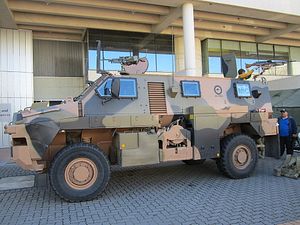Asia now leads the world in growth in military spending, with arms sales to Asia and Oceania accounting for 47 percent of global arms trade. While military spending in and around the South China Sea often grabs headlines, as does India and Pakistan’s increased imports, Australia has also significantly increased its budget.
New figures from the Stockholm International Peace Research Institute (SIPRI) show Australian imports of major arms increased by 83 percent in the five years to 2013. Australia is now the seventh biggest importer of major weapons in the world.
Despite austere budget cutbacks in every other area of government expenditure, Prime Minister Tony Abbott has allocated a six percent military budget increase of around A$1.5 billion ($1.4 bilion). He also announced that Australia would buy a further 58 U.S. made F-35 Joint Strike Fighters.
Australia’s major arms imports mostly come from the U.S., and Australia is now America’s single biggest major arms customer. In addition to the F-35s, which are due to enter service by 2020, Australia also has eight Poseidon surveillance planes, two amphibious assault ships, and seven Triton surveillance drones on order from the U.S.
Australia now buys 10 percent of all U.S. weapons exports.
While stepping up big ticket spending on imports, Australia has also been looking to develop its arms manufacturing sector. At present, A$42 billion is slated to be spent between the construction of three air-warfare destroyers (due in 2015), as well as 12 domestically produced diesel-electric submarines.
The submarines, due for completion by 2030, are an Australian improvement on the Collins-class submarines currently used by the Royal Australian Navy (RAN). In announcing the build in 2012, then-Defence Materiel Minister Jason Clare said that they were creating an industry that would last 100 years.
Australia also recently concluded the sale of four Australian-made Bushmaster protected mobility vehicles to Japan. The Bushmaster was used heavily by the Australian Defence Force in Iraq and Afghanistan, and more than 1,000 have been manufactured and sold to date. The Netherlands and Jamaica are the only other countries to have purchased the vehicles to date.
Australia has also historically manufactured a large portion of its defence force’s small arms (and continues to do so), mainly through Lithgow Arms, which was privatized in 2006.
While Australia is by no means a major arms producer in the region, it is building capacity, with the government keen to see an increase of major arms manufacturing. As tensions and defense spending continue to rise around the region, Australia may find plenty of willing customers amongst its allies.

































